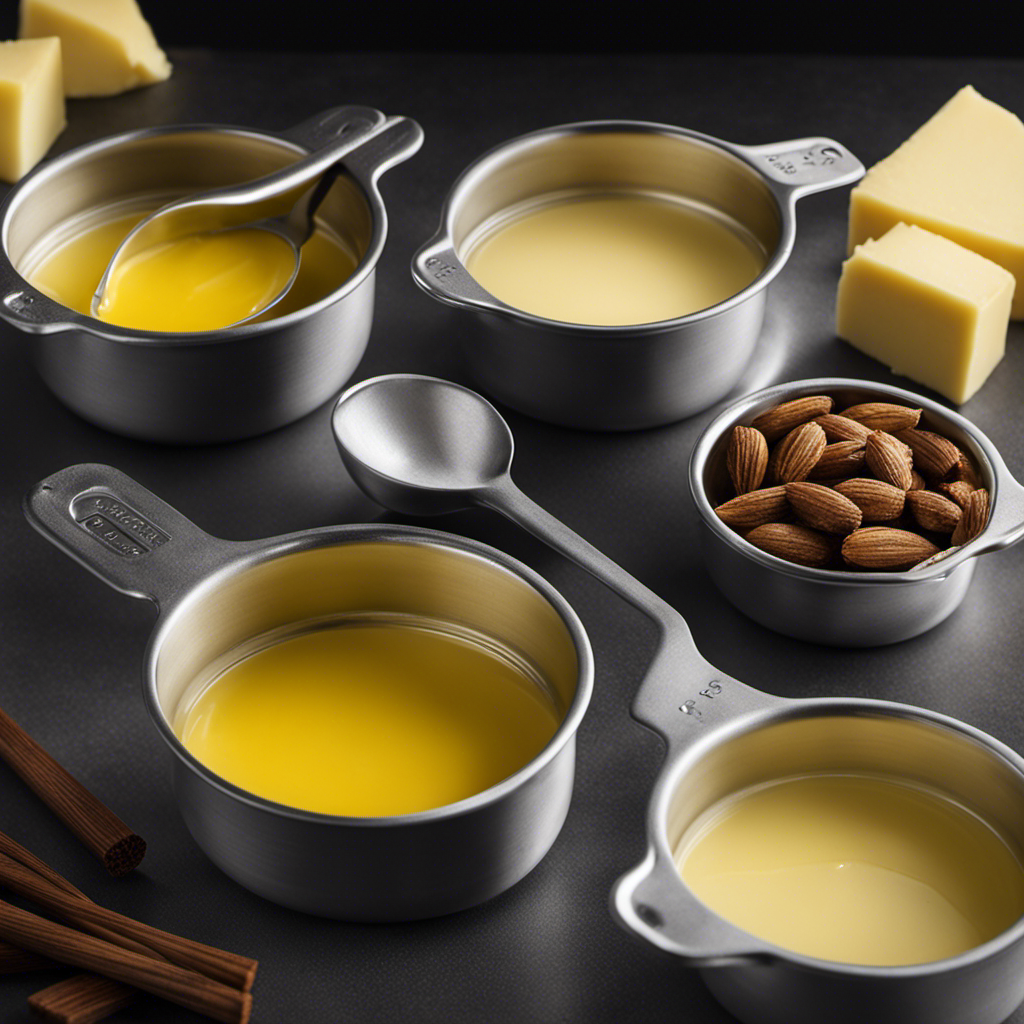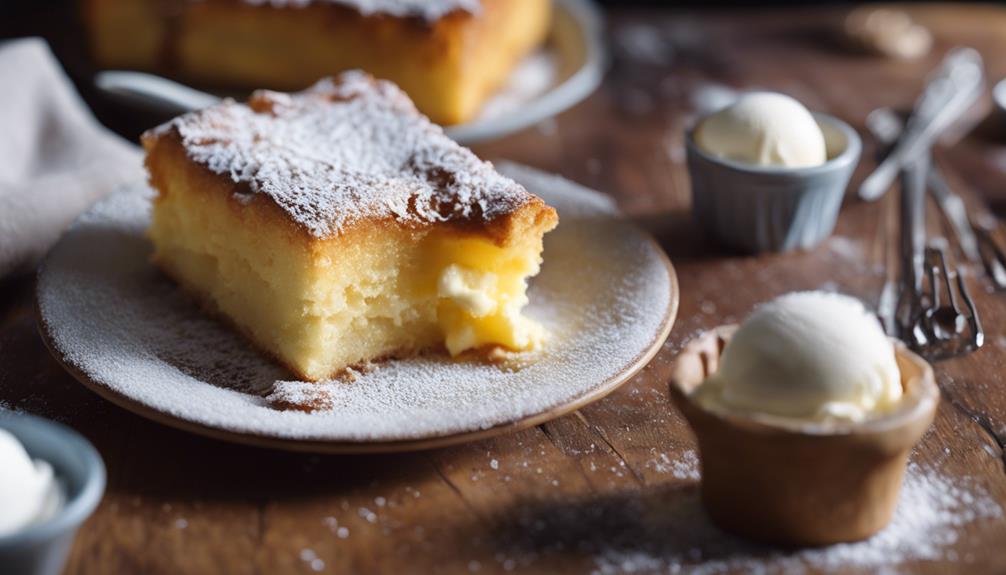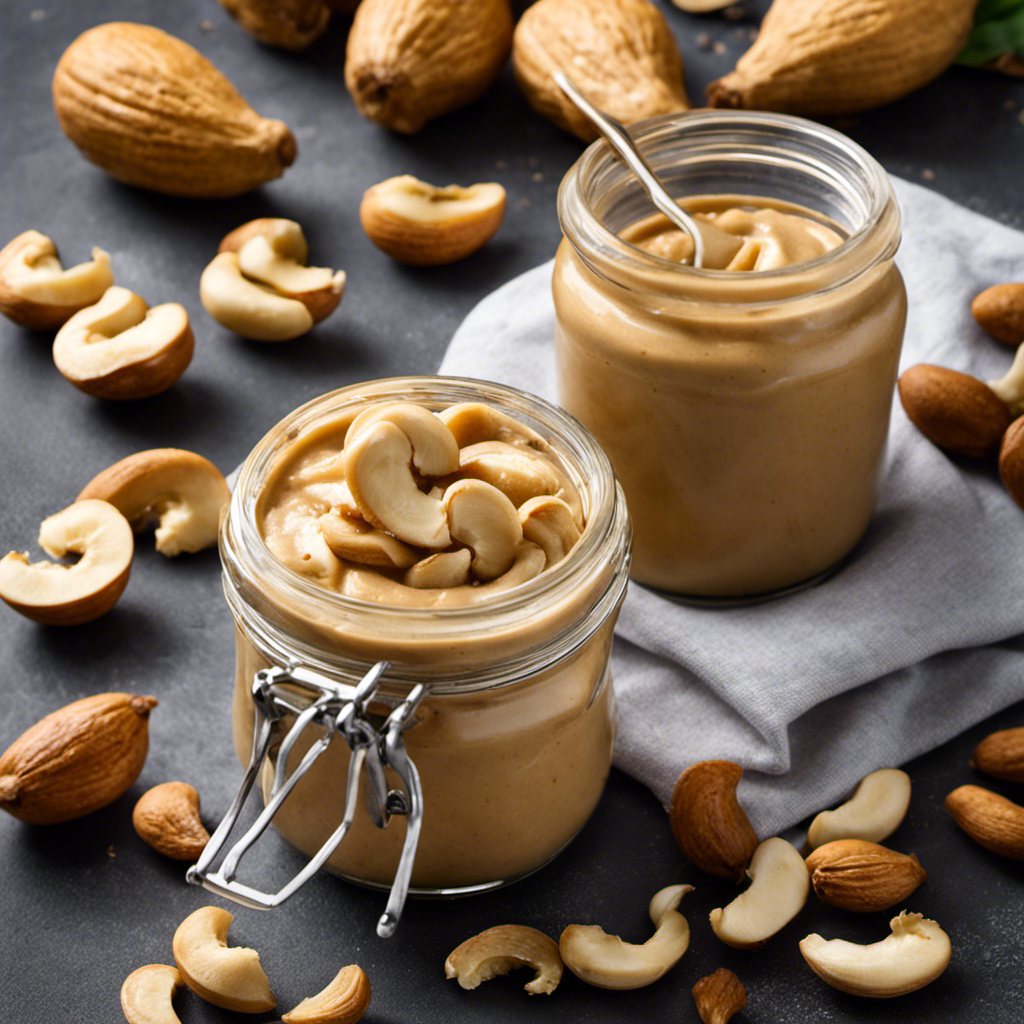I’m a huge fan of the rich and irresistible taste of Biscoff cookie butter. If you’re someone who just can’t get enough of this delicious spread, you’re in for a treat!
In this article, I’ll share with you my tried-and-true recipe for making your own homemade Biscoff cookie butter. Get ready to delight your taste buds with the perfect blend of sweet and spiced flavors.
So grab your apron and let’s dive into the world of Biscoff cookie butter deliciousness!
Key Takeaways
- The ingredients needed for Biscoff Cookie Butter
- Step-by-step instructions for making Biscoff Cookie Butter
- Tips for achieving the perfect consistency of Biscoff Cookie Butter
- Variations and additions to enhance the flavor of Biscoff Cookie Butter
Ingredients Needed for Biscoff Cookie Butter
To make biscoff cookie butter, you’ll need just three simple ingredients. It’s amazing how these ingredients can come together to create a delicious and addictive spread.
First, you’ll need a generous amount of biscoff cookies. These cookies have a unique caramelized flavor that perfectly balances sweetness with a hint of spice.
Next, you’ll need some creamy peanut butter. This ingredient adds a smooth and nutty texture to the cookie butter.
Finally, you’ll need some sweetened condensed milk to bind everything together and give it a rich and creamy consistency.
It’s incredible how these three ingredients can transform into a spread that rivals any store-bought alternative spreads. Trust me, once you try this homemade biscoff cookie butter, you’ll never go back to store-bought again.
Step-By-Step Instructions for Making Biscoff Cookie Butter
Start by crushing the Biscoff cookies until they form a fine crumb texture. This is an important step in achieving smoothness in your biscoff cookie butter. You can use a food processor or simply place the cookies in a ziplock bag and crush them with a rolling pin. Once the cookies are crushed, transfer them to a bowl and set aside.
Now, let’s address some common issues that may arise during the process. One issue you may encounter is clumps forming in your cookie butter. This can happen if the cookies are not crushed finely enough. To troubleshoot this, make sure to keep crushing the cookies until they are a fine crumb texture.
Another issue could be the cookie butter being too dry. If this happens, you can add a little bit of melted butter or vegetable oil to the mixture and blend it again until it reaches the desired consistency.
With these troubleshooting tips in mind, you’re now ready to move on to the next section where I will share some helpful tips for achieving the perfect consistency of biscoff cookie butter.
Tips for Achieving the Perfect Consistency of Biscoff Cookie Butter
When it comes to making the perfect Biscoff cookie butter, there are a few key points to consider. Achieving the ideal consistency is crucial in order to fully enjoy the rich and indulgent flavor of this beloved spread.
One important factor to consider is the balance between creaminess and thickness. The cookie butter should be smooth and creamy, but not too thin or watery. It should also have a spreadable texture that is easy to spread on toast, crackers, or other treats.
Finding the right balance between creaminess and thickness can be a bit of a challenge, but it is definitely worth the effort. With the right consistency, you can create a Biscoff cookie butter that is both satisfying and delicious.
Creaminess Vs. Thickness
For a creamy biscoff cookie butter, you’ll want to use a higher ratio of oil to achieve that smooth texture. Creaminess is key when it comes to creating the perfect spread. But it’s important to strike a balance between creaminess and sweetness.
Too much sweetness can overpower the cookie flavor, while too much creaminess can make it too rich. Finding the right texture is also crucial. You want the butter to be thick enough to spread easily on toast or crackers, but not so thick that it becomes difficult to scoop out of the jar.
Remember, it’s all about finding that perfect balance between creaminess and sweetness, and texture and spreadability.
- Use a higher ratio of oil for a creamier texture.
- Find the right balance between sweetness and creaminess.
- Ensure the butter is thick enough to spread easily.
- Avoid making it too thick that it becomes difficult to scoop.
Balancing Spreadability and Texture
To strike the perfect balance between spreadability and texture, it’s crucial to find the right thickness for the creamy biscoff spread. Achieving smoothness is the key to creating a spreadable delight that is both satisfying and enjoyable.
There are several spreadability techniques that can help you achieve this desired consistency.
One technique is to gradually add small amounts of liquid to the biscoff spread while mixing it. This can be done using milk, cream, or even melted butter. The liquid helps to loosen the spread and make it easier to spread onto toast, crackers, or whatever you fancy.
Another technique is to warm the biscoff spread slightly before using it. By gently heating it in the microwave or on the stovetop, the spread becomes more fluid and spreads effortlessly. Just be careful not to overheat it, as this can affect the texture and taste.
Experimenting with different thicknesses and spreadability techniques will allow you to find the perfect balance that suits your taste buds. So go ahead, get creative, and enjoy the smooth and spreadable goodness of biscoff spread!
Variations and Additions to Enhance the Flavor of Biscoff Cookie Butter
If you want to enhance the flavor of your biscoff cookie butter, try adding a sprinkle of cinnamon or a drizzle of honey. These simple additions can take your cookie butter from delicious to absolutely irresistible.
But don’t stop there! There are so many variations and flavors you can experiment with to create your own unique twist on this delectable spread. Here are some ideas to get you started:
- Mix in some crushed nuts for added crunch and texture.
- Stir in a tablespoon of cocoa powder for a rich and chocolatey taste.
- Add a few drops of vanilla extract for a hint of sweetness.
- For a spicy kick, sprinkle in some cayenne pepper or chili powder.
With these variations and additions, you can transform your biscoff cookie butter into a truly extraordinary treat. Let your creativity run wild and discover the perfect flavor combination that will leave you craving more.
Storing and Preserving Biscoff Cookie Butter
When it comes to enjoying the deliciousness of Biscoff cookie butter, it’s important to know how to properly store and preserve it.
In this discussion, we will explore some valuable tips on extending the shelf life of your beloved spread, along with the best storage methods to keep it fresh and flavorful.
Additionally, we will delve into various preservation techniques that can help you make the most out of your Biscoff cookie butter for a longer period of time.
Shelf Life Tips
Remember, keeping your homemade biscoff cookie butter stored in an airtight container in the refrigerator will help extend its shelf life. Here are some additional tips to prevent spoilage and ensure that your cookie butter stays fresh for as long as possible:
-
Use clean utensils: Make sure to always use clean spoons or knives when scooping out the cookie butter. This will prevent any cross-contamination and the introduction of bacteria that could spoil the spread.
-
Avoid double-dipping: Resist the temptation to double-dip your utensil into the jar after it has been in contact with food or your mouth. This can introduce bacteria into the cookie butter and shorten its shelf life.
-
Keep it dry: Moisture is the enemy when it comes to preserving your homemade biscoff cookie butter. Make sure the jar is completely dry before adding the spread, and avoid storing it in areas of high humidity.
-
Check for signs of spoilage: Regularly inspect your cookie butter for any signs of mold or off-putting odors. If you notice any, it’s best to discard the entire jar to prevent any potential health risks.
Proper Storage Methods
To ensure that your homemade spread stays fresh, store it in an airtight container in the refrigerator. Proper storage is essential for maintaining the flavor and texture of your biscoff cookie butter. When it comes to choosing the best container, opt for glass jars or plastic containers that have a tight seal. These will help to keep out air and moisture, preventing your spread from spoiling. Avoid using containers made of metal or porous materials, as they can affect the taste and quality of the cookie butter. Here is a comparison of different container options to help you make the right choice:
| Container Type | Pros | Cons |
|---|---|---|
| Glass Jars | Retains freshness, easy to clean | Can be heavier, may break if dropped |
| Plastic Containers | Lightweight, durable | Can absorb odors over time |
| Metal Tins | Stylish, can be reused | May affect taste, not airtight |
Preservation Techniques
Preserving your homemade spread is important for maintaining its freshness and flavor, so let’s explore some techniques to help extend its shelf life.
When it comes to preserving homemade jams, there are a few key methods to keep in mind:
- Sterilize your jars: Before filling them with your delicious jam, make sure to sterilize the jars and lids by boiling them or using a dishwasher.
- Use proper sealing techniques: Ensure a tight seal by using new lids and bands, and follow the instructions for processing in a water bath or pressure canner.
- Store in a cool, dark place: Keep your preserved jams away from direct sunlight and extreme temperatures to maintain their quality.
- Check for signs of spoilage: Regularly inspect your jars for any signs of mold, discoloration, or unusual odors.
By following these preservation techniques, you can enjoy your homemade jams for an extended period of time.
Now, let’s move on to exploring some serving suggestions and creative uses for biscoff cookie butter.
Serving Suggestions and Creative Uses for Biscoff Cookie Butter
There are endless ways to enjoy biscoff cookie butter. From spreading it on toast to using it as a dip for fruit, the creamy and delicious spread can elevate any dish and satisfy your sweet tooth.
One of my favorite serving suggestions is to drizzle it over warm pancakes or waffles for a decadent breakfast treat. The combination of the warm, fluffy pancakes or waffles with the rich and sweet cookie butter is simply irresistible.
Another unique recipe idea is to swirl it into your favorite brownie batter before baking. This creates a gooey and indulgent dessert that is sure to please any chocolate lover. The cookie butter adds a delicious twist to the classic brownie, making it even more irresistible.
For those who love a little spice, try mixing biscoff cookie butter with a touch of cinnamon and spreading it on warm apple slices. The combination of the sweet cookie butter and the warm, slightly tart apples creates a flavor explosion that is both comforting and satisfying.
The possibilities are truly endless with this versatile spread. Whether you’re using it as a topping, a filling, or a dip, biscoff cookie butter is sure to add a burst of flavor to any dish. So go ahead, get creative, and enjoy the deliciousness of biscoff cookie butter in all its forms.
Frequently Asked Questions
Can I Use Other Types of Cookies Instead of Biscoff Cookies to Make Cookie Butter?
Yes, you can substitute other types of cookies for Biscoff cookies to make cookie butter. It’s a great way to experiment with different flavors and create unique combinations. Just blend the cookies with butter and enjoy!
How Long Does Biscoff Cookie Butter Last in the Refrigerator?
In the refrigerator, Biscoff cookie butter can last for up to three weeks. To keep it fresh, make sure to store it in an airtight container. Enjoy the creamy deliciousness while it lasts!
Can I Freeze Biscoff Cookie Butter?
Yes, you can freeze homemade spreads like Biscoff cookie butter. It’s a great way to extend its shelf life. And don’t forget, you can also use it as a delicious topping for pancakes or as a filling for cookies!
Can I Substitute the Vegetable Oil With a Different Type of Oil?
Yes, you can substitute vegetable oil with different types of oil in your recipe. Consider using options like coconut oil, olive oil, or even melted butter for a unique flavor twist. Experiment and find your favorite!
Can I Use a Food Processor Instead of a Blender to Make Biscoff Cookie Butter?
Using a food processor instead of a blender for making Biscoff cookie butter is like using a shovel instead of a spoon to scoop ice cream. It may work, but the texture might not be as smooth. However, you can still use the cookie butter as a spread or in recipes.
Conclusion
In conclusion, making Biscoff cookie butter is a delightful experience that combines the rich flavors of Biscoff cookies with the smooth and creamy texture of butter.
It’s a simple process that yields a decadent spread perfect for enjoying on toast, pancakes, or even as a dip for fruit.
The contrasting flavors of sweet and spicy, combined with the velvety consistency, create a mouthwatering treat that will satisfy any sweet tooth.
So why not give it a try and indulge in the deliciousness of homemade Biscoff cookie butter?
You won’t be disappointed.










